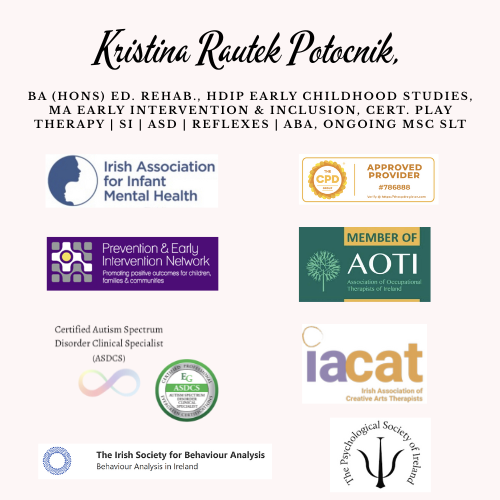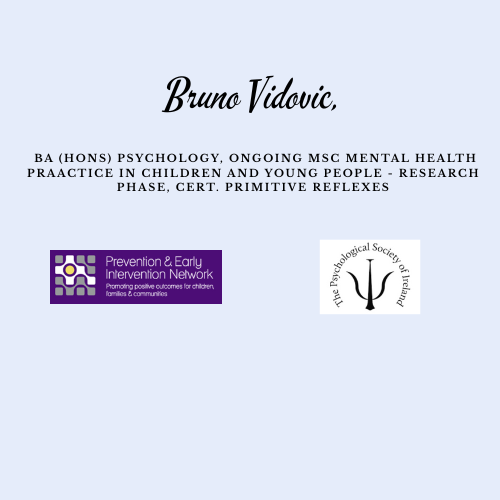The Inner Conditions Children Need for Learning
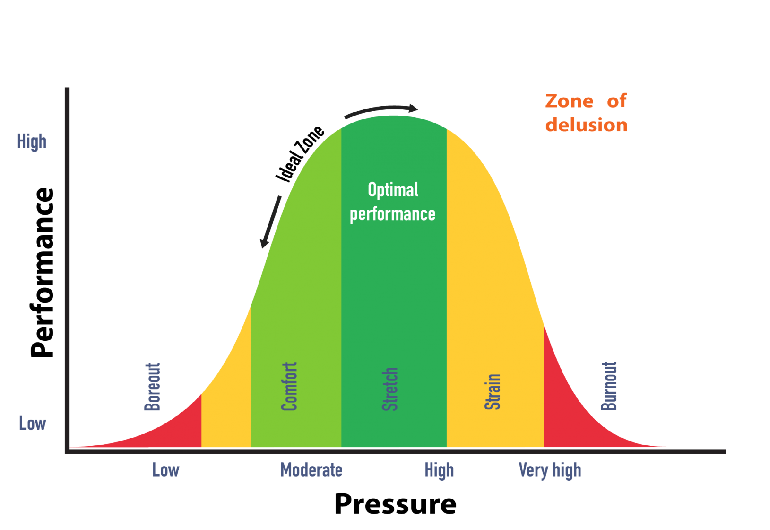
Author: Kristina Rautek Potocnik, BA (Hons) Ed. Rehab., HDip Early Childhood Studies, MA Early Intervention & Inclusion, Cert. Play Therapy | SI | ASD | Reflexes | ABA, ongoing MSc SLT
Why a Child’s Level of Alertness Matters for Memory and Learning
Every child has the ability to learn, remember, and do different tasks. But in order to do that, the child needs to be in the right state. This means they need both good surroundings and good inner conditions. In today’s blog, we will focus on these inner conditions.
One of the most important inner conditions is a child’s level of alertness. This tells us how awake, focused, or calm a child is. If a child is not alert enough or is too alert, learning becomes difficult. Only when a child reaches the right level of alertness can learning and memory work well.
Sometimes we work with children who seem to move slowly, look sleepy, or have low muscle tone. These children have low alertness. On the other hand, some children are moving too much, breathing fast, switching from one activity to another, or acting in a disorganised way. These children have high alertness.
In both cases, it is our job to help the child find their optimal zone. We do this through our voice, body language, eye contact, and the way we speak. For example, if a child has low alertness, we should not speak in a quiet or slow way. We need to help them “wake up” a little and get ready to learn.
Once the child is in the right zone, their brain is ready to learn. There is even a well-known graph that shows this clearly.
👉 Take a look at the image in this post to see how learning works best when the child is in the middle zone.
The graph shows that we learn best when we are alert, but not stressed. In this zone, the brain releases just the right amount of important chemicals like dopamine, cortisol, and norepinephrine. These chemicals help activate the prefrontal cortex, the part of the brain that helps us solve problems, focus, and learn new things.
If the brain has too little of these chemicals, the child may feel bored or unmotivated. If there is too much, the child may feel stressed or overwhelmed. At that point, the brain does not want to think anymore—it only wants to escape or survive. This is what we call dysregulation, and it makes learning very difficult.
All of this science supports what many therapists and teachers say: we need to find the “just right challenge”. This means that the task should be interesting and a little bit hard—but not too hard. It should make the child curious and active, not bored or frustrated.
Finding this perfect zone is not easy. In fact, we will not get it right every time. But that is okay. Each mistake helps us learn more about what the child needs. Over time, we become better at helping children stay in their learning zone.
Sources:
Altabas, V., Marinković-Radošević, J. & Šimić, G. (2020). The effect of hormones on emotions and mood. In: Šimić, G. (ed.) Introduction to the Neuroscience of Emotions and Feelings. Zagreb: Ljevak, pp. 299–331.
McGaugh, J. L. (2018). Emotional arousal regulation of memory consolidation. Current Opinion in Behavioral Sciences, 19, 55–60.
Latest Posts
- How children make sense of the world through their senses
- How your baby learns about the world through their senses
- Helping your child grow stronger through movement and play
- Understanding How Early Intervention Helps Children Learn, Move, and Connect
- How to Recognise Tactile Defensiveness and Help Your Child Feel Safe
- Understanding Feeding Challenges and How to Support Your Child at Home
- Let’s Talk Sitting: Exploring Floor Seating Options
- Retained Primitive Reflexes: The Hidden Cause Behind Developmental Struggles
- Where Curiosity Blossoms: How Children's Play Nurtures Growth for All
- Helping Your Child Through Stress: A Gentle Guide for Parents
- Sweet Little Lies – How to Recognise and Respond with Care
- Chores Are More Than Just Tasks – They’re a Tool for Growing Independence, Focus, and Confidence
- How to Help Children Develop Emotional Intelligence
- Blending Technology and Care: How VR Meta Quest Supports Children at NeuroNest
- A simple guide for parents who want to raise confident, happy children
- Setting Boundaries with Love: A Simple 3-Step Guide for Parents
- Understanding Behavior Through the Nervous System
- A Compassionate Lens on Dysregulation in Non-Speaking Autistic Individuals
- Supporting Development Through Movement: The Role of the Swing in Early Intervention
- Blending Tradition and Innovation: How NeuroNest Supports Your Child’s Unique Journey
- When Movement Meets Innovation: Supporting Child Development with GoBalance
- Why Visual Perception Matters for Everyday Life and Development
- Benefits of Chess in Early Intervention
- Building Healthy Nutrition from the Start
- A Journey Back to Your True Self
- Supporting Your Child’s Hand Skills for Confident Writing
- Blending the Best of Both Worlds
- Helping Toddlers Eat Well: A Parent’s Guide
- Why Tummy Time Matters for Your Baby's Development
- Helping Your Child Build Everyday Independence
- Who Are the Disconnected Kids?
- From First Tries to Automatic Habits: Understanding the Stages of Skill Learning
- Why a Child’s Level of Alertness Matters for Memory and Learning
- Early brain development starts before birth
- Why Slowing Down, Adapting Tasks, and Adding Breaks Helps Children Learn Better
- Why ADHD, Autism, Dyslexia and Other Challenges Need a New Approach
- The surprising power of copying in child development
- Books are more than just language tools—they’re powerful allies in sensory and motor development.
- Rethinking sensory support: moving beyond expensive rooms toward everyday understanding.
- Understanding how fear develops in a child’s brain
- Understanding how an early baby reflex can affect your child’s daily life
- A gentle start into baby development through movement and bonding
- A child-centred, research-informed approach that uses the power of play to support communication, emotional regulation, motor development, and meaningful growth from infancy to twelve years.
Our Partners

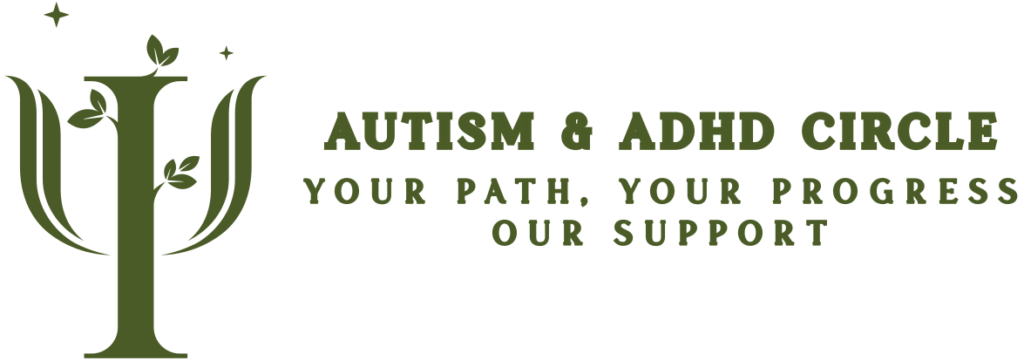

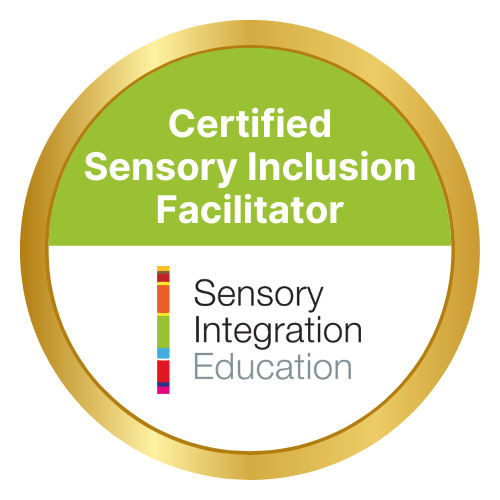
Our Memberships
